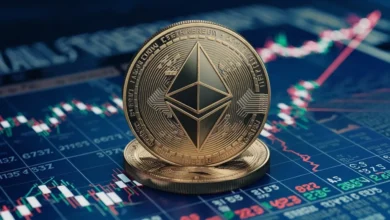
Understanding Gold Loan Amounts Per Gram and Future Gold Rate Predictions
Gold loans have become an essential financial tool for many in India, offering a quick and efficient way to access funds by leveraging the value of gold. With fluctuating gold prices and varying loan-to-value (LTV) ratios offered by lenders, understanding how the gold loan amount per gram is determined is crucial. This information is a good guide for an individual to make well-informed decisions when considering to take a gold loan. Additionally, predicting future gold rates can offer insights into potential loan amounts and the long-term viability of taking a loan against gold. This article explores how today’s gold rate affects the gold loan per gram and the factors influencing gold prices.
Table of Contents
The Basics of Gold Loans
A gold loan is a loan that is considered secured, and you pledge your gold jewels as collateral to borrow funds from a lender. The loan amount you receive is directly linked to the weight and purity of your gold and the prevailing gold rate on the day you apply for the loan. Here’s a breakdown of how these elements work together:
- Gold Weight and Purity: The weight of the gold you pledge, measured in grams, and its purity, usually measured in carat (ct), are fundamental in determining the gold loan amount. While most lenders offer gold loans for higher-purity gold (e.g., 22 carat), not all do so for lower-purity gold (e.g., 18 carats).
- Gold Rate Today: The current market price of gold per gram significantly impacts the loan amount. Gold prices fluctuate daily due to various factors, including global economic conditions, demand and supply dynamics, and currency fluctuations. For example, in Gurgaon, the gold rate today (as of 21 August 2024) for 24-carat gold is ₹7,098 per gram. This rate is pivotal when determining the loan amount you can receive.
- Loan-to-Value Ratio (LTV): The Reserve Bank of India (RBI) has set a maximum LTV ratio for gold loans, typically around 75% for NBFCs. This means that a NBFC can offer you a loan amount equivalent to up to 75% of the market value of your gold as on that date. The actual LTV may vary depending on the lender.
How Gold Rate Affects Gold Loan Per Gram in India
The gold rate on the day you apply for a loan plays a pivotal role in determining how much money you can borrow per gram of gold. Here’s how it works:
- Market Price of Gold: The gold rate today is the market price of gold per gram as on date. This rate fluctuates daily and is influenced by various economic factors, including inflation, interest rates, geopolitical tensions, and changes in currency exchange rates. For example, Gold Price for Last 10 Days in Gurgaon
| Date | 24 Carat | 22 Carat |
|---|---|---|
| 21 August | ₹72,962 (+₹442) | ₹66,834 (+₹404) |
| 20 August | ₹72,521 (+₹701) | ₹66,429 (+₹643) |
| 19 August | ₹71,819 (+₹862) | ₹65,786 (+₹790) |
| 18 August | ₹70,957 (-₹353) | ₹64,996 (-₹323) |
| 17 August | ₹71,310 (+₹141) | ₹65,320 (+₹129) |
| 16 August | ₹71,169 (+₹22) | ₹65,190 (+₹20) |
| 15 August | ₹71,147 (-₹71) | ₹65,170 (-₹65) |
| 14 August | ₹71,218 (-₹212) | ₹65,235 (-₹195) |
| 13 August | ₹71,430 (+₹1,051) | ₹65,430 (+₹963) |
| 12 August | ₹70,379 (+₹368) | ₹64,467 (+₹337) |
- LTV Ratio: The loan-to-value ratio dictates how much of your gold’s value the lender will give you as a loan. For example, if the gold rate today is ₹7,098 per gram and the lender offers a 75% LTV, you can borrow ₹5,323.50 per gram of gold. If the LTV is lower, say 60%, you would only receive ₹4,258.80 per gram.
Table 1: Impact of LTV on Gold Loan Amount Per Gram
| Market Price of Gold Per Gram (₹) | LTV Ratio | Gold Loan Amount Per Gram (₹) |
|---|---|---|
| ₹7,098 | 75% | ₹5,323.50 |
| ₹7,098 | 60% | ₹4,258.80 |
As seen in the table above, the LTV ratio directly influences the gold loan amount per gram. A higher LTV lets you borrow more against your gold, while a lower LTV results in a smaller loan amount. Note that the LTV depends on the interest rate chosen by the customer.
Factors Influencing Gold Prices in India
Understanding the factors that influence gold prices/gold rates is essential for predicting future gold rates and, consequently, the gold loan amounts you can expect. Some key factors include:
- Global Economic Conditions: Gold is often considered as a stable asset in times of economic uncertainty. When global markets are volatile, investors flock to gold, driving its price. Conversely, when the economy is stable, gold prices may decrease.
- Inflation: Gold is often used as a hedge against inflation. When inflation rises, the value of paper currency decreases, making gold more attractive, which increases its price.
- Currency Fluctuations: The value of the INR against the US Dollar affects gold prices in India. A weaker Rupee makes gold more expensive, while a stronger Rupee can lower gold prices.
- Demand and Supply: Gold prices are also influenced by demand and supply dynamics. Increased demand for gold during festive seasons or wedding seasons in India can drive up prices. Conversely, if supply exceeds demand, prices may fall.
Gold Rate Prediction: Trends and Future Outlook
Making gold price predictions for the next 5 years can be challenging, but understanding current trends and market indicators can provide some insight. Here are some potential trends for the next five years:
- Continued Economic Uncertainty: Global economic conditions remain uncertain due to geopolitical tensions, trade wars, and the aftermath of the COVID-19 pandemic. These factors could continue to drive gold prices upward as investors seek safe-haven assets.
- Inflationary Pressures: Rising inflation rates worldwide could lead to higher gold prices as investors look to protect their wealth against currency depreciation.
- Central Bank Policies: The policies of central banks, particularly the US Federal Reserve, regarding interest rates and money supply, will play a crucial role in determining gold prices. If central banks keep interest rates low, gold prices could continue to rise.
- Technological Demand: Increasing use of gold in technology, particularly in electronics and renewable energy sectors, could boost demand and support higher prices.
For those considering a gold loan, go for a reputable Non-Banking Financial Company (NBFC) that offers competitive gold loan schemes. Here’s what you must consider:
- Simplified Processes: A streamlined application process with minimal documentation, making it easy to secure a loan quickly.
- Flexible Payment Options: Flexible part payment or prepayment options allow you to choose a plan that suits your financial situation.
- Transparency: In current scenarios, transparency is most important, ensuring that all terms and conditions are clearly communicated before you agree to the loan.
- Extensive Branch Network: To make it convenient for you to apply for a loan.
Conclusion
Understanding how the gold rate today impacts the gold loan amount per gram is essential for making informed financial decisions. By staying updated on gold prices and considering factors like LTV ratios, you can maximize the amount you borrow against your gold. Additionally, keeping an eye on gold price predictions for the next five years can help you plan your financial future more effectively.
When considering a gold loan, partnering with a reputable and trusted lender like Muthoot Finance, an experienced holder with a legacy of more than 800 years and more than 6500 branches spread across India, is one of the most reliable names in the industry. Most importantly, with a long-standing history of ethical practices and clear, transparent loan terms, Muthoot Finance ensures a reliable and straightforward borrowing experience that provides you with the security, flexibility, and transparency you need to meet your financial goals.








